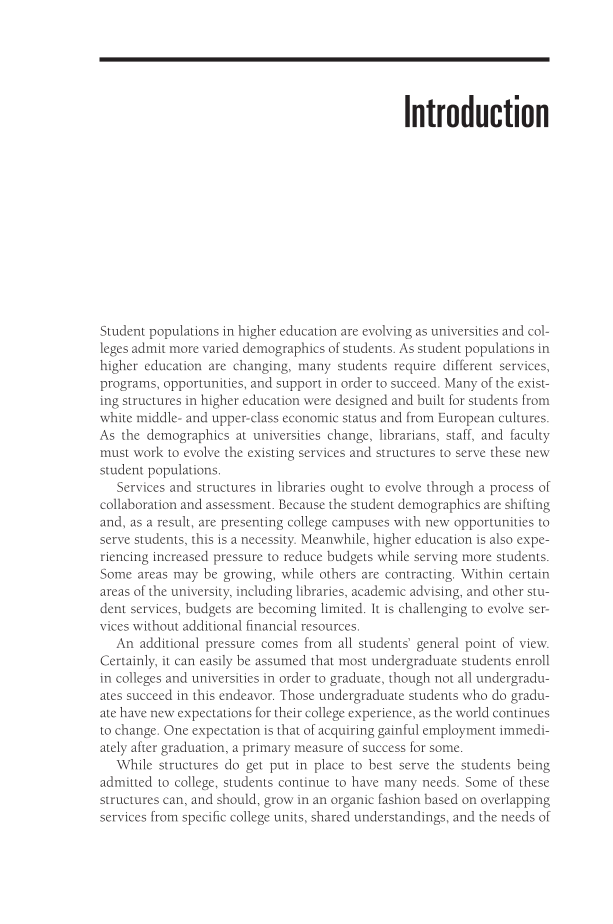Introduction Student populations in higher education are evolving as universities and col- leges admit more varied demographics of students. As student populations in higher education are changing, many students require different services, programs, opportunities, and support in order to succeed. Many of the exist- ing structures in higher education were designed and built for students from white middle- and upper-class economic status and from European cultures. As the demographics at universities change, librarians, staff, and faculty must work to evolve the existing services and structures to serve these new student populations. Services and structures in libraries ought to evolve through a process of collaboration and assessment. Because the student demographics are shifting and, as a result, are presenting college campuses with new opportunities to serve students, this is a necessity. Meanwhile, higher education is also expe- riencing increased pressure to reduce budgets while serving more students. Some areas may be growing, while others are contracting. Within certain areas of the university, including libraries, academic advising, and other stu- dent services, budgets are becoming limited. It is challenging to evolve ser- vices without additional financial resources. An additional pressure comes from all students’ general point of view. Certainly, it can easily be assumed that most undergraduate students enroll in colleges and universities in order to graduate, though not all undergradu- ates succeed in this endeavor. Those undergraduate students who do gradu- ate have new expectations for their college experience, as the world continues to change. One expectation is that of acquiring gainful employment immedi- ately after graduation, a primary measure of success for some. While structures do get put in place to best serve the students being admitted to college, students continue to have many needs. Some of these structures can, and should, grow in an organic fashion based on overlapping services from specific college units, shared understandings, and the needs of
Document Details My Account Print multiple pages
Print
You have printed 0 times in the last 24 hours.
Your print count will reset on at .
You may print 0 more time(s) before then.
You may print a maximum of 0 pages at a time.


























































































































































